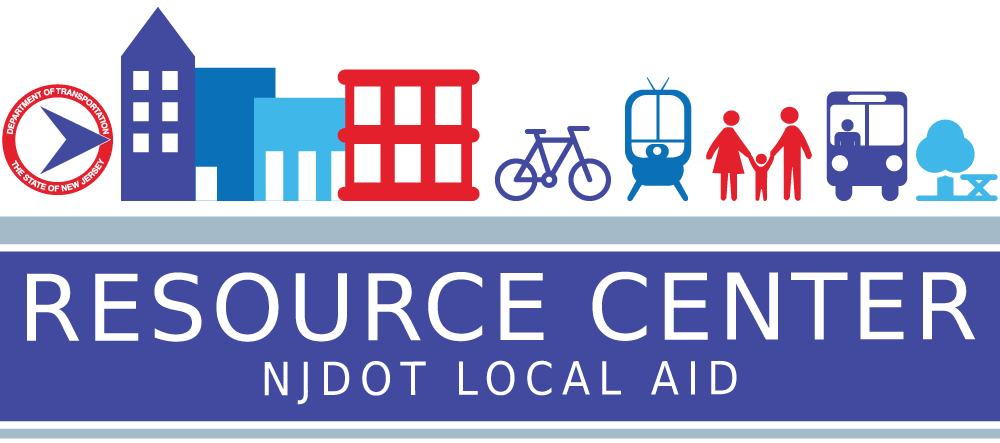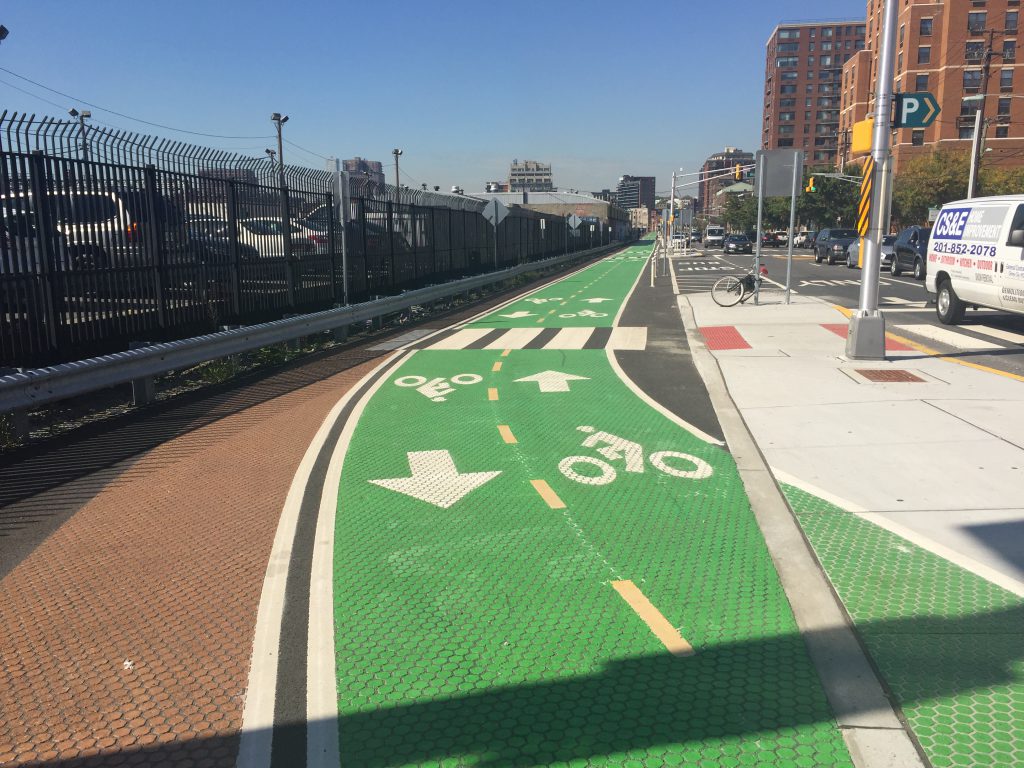Active transportation modes are gaining popularity in the United States. They can enhance both physical and mental health while helping to reduce transportation congestion, air pollution, and carbon emissions. Micromobility modes are a part of active transportation. “Micromobility” refers to smaller, lighter, low-speed transportation devices, which can be motorized or human-powered, and can be either shared or privately owned (for example, bicycles, e-bikes, electric scooters, electric skateboards, and shared bicycles). These micromobility modes are becoming increasingly popular as cities strive to improve quality of life and reduce their carbon footprint. The micromobility modes can also tackle the issue of first- and last-mile connectivity to transit stops and stations, increasing transportation and employment options for people without access to cars. The electric micromobility modes, such as electric bikes and scooters, provide a convenient mode of transportation for people with limitations due to age, physical fitness levels, and disabilities.
Implementing active transportation projects can be costly, and securing funding can be challenging. This article discusses some common funding resources available to New Jersey communities to advance Complete Streets initiatives, including infrastructure and non-infrastructure projects and programs to increase walking and biking.
New Jersey Department of Transportation
New Jersey offers a range of funding resources for active transportation projects. The Division of Local Aid and Economic Development at the New Jersey Department of Transportation (NJDOT) administers funding to local public agencies such as county and municipal governments for construction projects to improve the state’s transportation system. Grant support and technical assistance are provided through the Local Aid Resource Center Help Desk (https://njdotlocalaidrc.com/). The New Jersey Transportation Trust Fund and the 2021 Bipartisan Infrastructure Law provide the opportunity for state and federal funding assistance to local governments for road, bridge, and other transportation projects. While NJDOT and the three metropolitan planning organizations (MPOs) that cover New Jersey administer many federal aid programs, including Transportation Alternatives and Safe Routes to School, the USDOT oversees some grant programs directly. NJDOT also delivers state aid programs. Below are some options for funding infrastructure projects through NJDOT.

State-Aid Infrastructure Grant Programs
Municipal Aid: This program funds local transportation projects and all municipalities in New Jersey are eligible to apply. NJDOT encourages applications for pedestrian safety improvements, bikeways, and streetscapes – including green infrastructure, such as curb extension rain gardens and bioswales. A common strategy for implementing on-street bicycle lanes is to include bike lane striping within repaving projects funded through this program.
County Aid: These funds are available to improve public roads and bridges under county jurisdiction. Public transit and other transportation projects are also included.
Bikeways: This program provides funding to counties and municipalities to promote bicycling as an alternate mode of transportation in New Jersey. A primary objective of the Bikeway Grant Program is to support the state’s goal of constructing 1,000 new miles of dedicated bike paths that are physically separated from vehicle traffic.
Safe Streets to Transit: This program encourages counties and municipalities to construct safe and accessible pedestrian linkages to all types of transit facilities and stations, to promote increased transit usage for all and decreased private vehicle use.
Transit Village: This program awards grants for transportation projects that enhance walking, biking, and/ or transit ridership within a ½ mile of the transit facility. Municipalities must first be designated as a Transit Village by the Commissioner of Transportation and the inter-agency Transit Village Task Force to be eligible to apply.
Bicycle and Pedestrian Planning Assistance (BPPA): NJDOT offers free local planning assistance through the Bureau of Safety, Bicycle, and Pedestrian Programs. Under the BPPA program, on-call consultants are paired with communities to complete various studies, including bicycle and pedestrian plans, safety assessments, trail feasibility studies, and improvement plans for traffic calming projects. One of the outcomes of these planning studies is a list of proposed projects, for which grant funding may be available. Priority is given to traditionally underserved communities and those with documented safety concerns.
State-Administered Federal-Aid Infrastructure Grant Programs
Transportation Alternatives Program: The Transportation Alternatives Program is a set-aside of the Surface Transportation Block Grant Program and is sometimes referred to as TA Set-Aside. It provides federal funds for community-based, “non-traditional” transportation projects designed to strengthen the cultural, aesthetic, and environmental aspects of the nation’s intermodal system. Municipalities receive bonus points on the grant application if they have an adopted Complete Streets policy, are a Targeted Urban Municipality, or are a designated Transit Village.
Safe Routes to School: The Safe Routes to School Program is federally funded through Transportation Alternatives but administered separately by the NJDOT and New Jersey’s three MPOs. The program provides federal funds for infrastructure projects that enable students in grades K-12, including those with disabilities, to safely walk and bicycle to school. Municipalities, in partnership with school districts, can receive bonus points on their applications if they have School Travel Plans, a Complete Streets policy, or a Transit Village designation.

Recreational Trails Program: The Recreational Trails Grant Program, administered by the New Jersey Department of Environmental Protection (NJDEP) Green Acres Program, provides federal funds for developing new trails and maintaining and restoring existing trails and trail facilities. This includes land and water trails for non-motorized (hiking, biking and horseback riding) and motorized purposes (dirt bikes and all-terrain vehicles). The program is currently on hold as it undergoes revisions.
USDOT-Administered Federal-Aid Infrastructure Grant Programs
The new Bipartisan Infrastructure Law (BIL), also known as the Infrastructure Investment and Jobs Act of 2021 (IIJA), and the Inflation Reduction Act of 2022 (IRA), established new funding programs for county and municipal governments looking to fund Complete Streets and other safety and active transportation-oriented projects. These funding bills also continued other programs from previous transportation funding legislation, such as the FAST Act and SAFETEA-LU. The new funding generally requires a 20-percent local match on a cost-reimbursement basis. In other words, for every dollar spent within the grant’s budget, up to 80 cents will be eligible for reimbursement by the federal government. Eligible entities apply for grants directly to the United States Department of Transportation through the grants.gov online portal.
- Safe Streets and Roads for All Program (SS4A): The Safe Streets and Roads for All Grant Program was established out of the Infrastructure Investment and Jobs Act of 2021 (IIJA). The Program funds the planning and implementation of projects and strategies that aim to eliminate roadway deaths and serious injuries. Funding can be used to produce plans, undergo demonstration projects, and implement permanent measures. Many Complete Streets-related measures are eligible. Congress has appropriated $5 billion to the Program through fiscal year 2026, and all grants have a 20 percent local match. The SS4A program supports the National Roadway Safety Strategy and the United States Department of Transportation’s goal of zero deaths and serious injuries on our nation’s roadways. Counties, municipalities, and other non-State government entities are eligible to apply. Applications for the 2023 fiscal year are due on July 10, 2023.
- Reconnecting Communities Pilot Program (RCP): The Reconnecting Communities Pilot Grant Program was also established under the IIJA. The program aims to correct the wrongs of past transportation projects, which have cut community connections to jobs, healthcare, and economic development. Ideal projects improve access in one or more ways, increasing opportunities for impacted community residents. Congress has appropriated $1 billion for Reconnecting Communities through fiscal year 2026. States, counties, and local governments are eligible to apply for funding to plan and implement projects on facilities of which the applicant is the owner. Non-owners may apply for planning and capital construction grants, provided that the facility owner has appropriately endorsed the application. All grants require a 20 percent local match. Planning grants can cover the remaining 80 percent of eligible activities; however, capital construction grants can only cover up to 50 percent of the total project cost. Therefore, to reduce the local cost commitment, the remaining 30 percent may be covered with other federal grants outside the Reconnecting Communities Pilot Program.
- Neighborhood Access and Equity Grant Program (NAE): The Neighborhood Access and Equity Grant Program was codified in the Inflation Reduction Act of 2022 (IRA). Much of the eligibility and criteria are similar to the Reconnecting Communities Pilot program (RCP, see above), which was created in the IIJA. It appropriates an additional $1.8 billion to reconnecting communities. In June 2023, USDOT announced that the next round of the RCP and NAE programs will be released in a combined Notice of Funding Opportunity, known together as the Reconnecting Communities and Neighborhoods (RCN) Program.
Funding from Other Sources
There are other funding sources that may help municipalities further Complete Streets projects. Sustainable Jersey and Together North Jersey have developed comprehensive online databases that catalog the many funding sources available. They can be found at the following locations:
- New Jersey Transportation Infrastructure Bank (NJTIB)
- NJTPA Congestion Mitigation and Air Quality (CMAQ) Program
- County and Municipal Open Space Trust Funds
- County and Municipal Capital Programs: If alternative funds are not available, but there is a political will to move forward with programs, county and municipal capital programs should be considered.
In conclusion, there are several funding options for Complete Streets initiatives, as well as programs promoting walking and biking. Federal and state grant programs can provide valuable sources of funding. These grants are highly competitive, and grant application requirements should be read carefully before making the decision to apply. From the reviewers’ perspective, the evaluation of applications is time-consuming, and often applications will not be reviewed if all the required elements are not received by the published deadline. The most successful applications tell the story of the populations most in need of the proposed improvements, especially disadvantaged communities, or vulnerable groups such as seniors. Applications should include compelling pictures, data, and other documentation to indicate how and why improvements are prioritized. By leveraging the resources described above, communities can create vibrant and accessible active transportation networks that benefit individuals and the environment alike.
